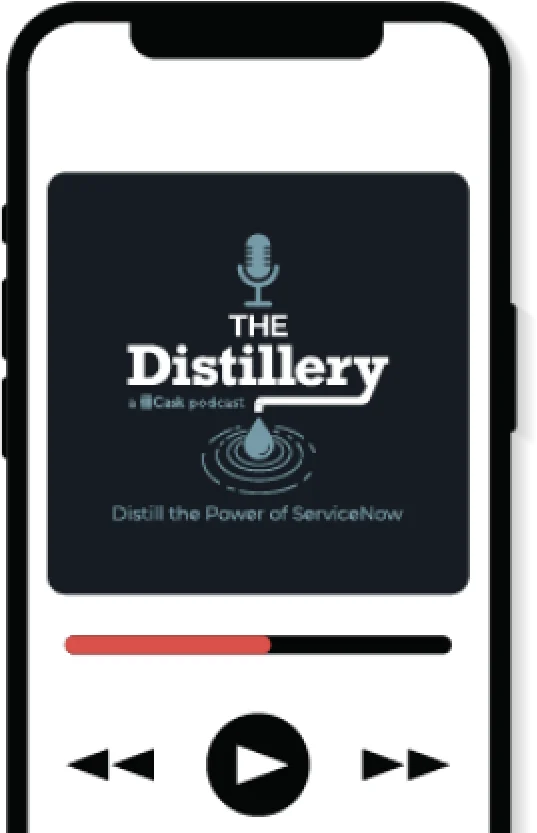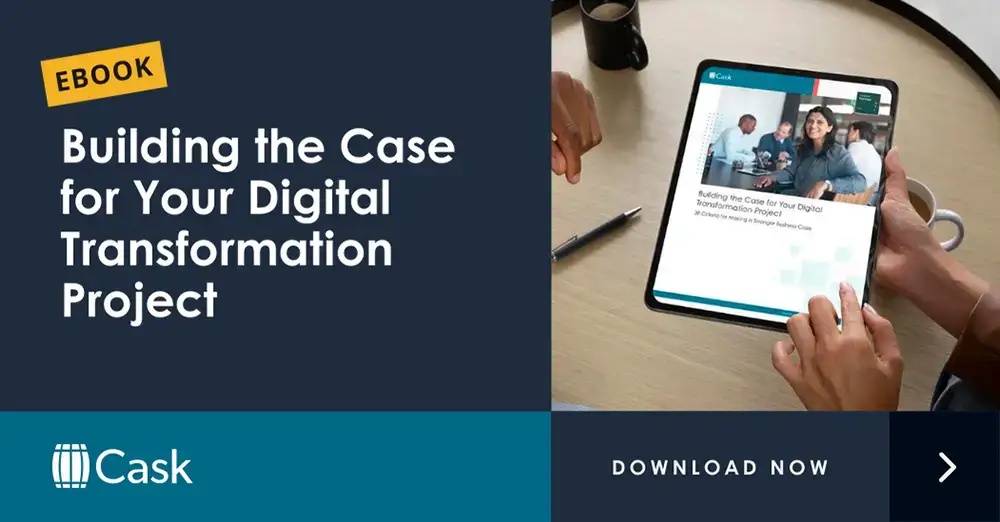While nearly 90 percent of large companies globally have a digital transformation underway, they have only captured 25 percent of the expected cost savings from the effort. How do we close this gap and turn these transformative efforts into the financial success stories they were meant to be? One key tool that can help organizations become purpose-oriented while accelerating their digital transformation is a strategic roadmap.

In this article, we’ll explore tips from Megan Harter, director of the Enterprise Transformation Office at Cask, who has over two decades of experience in tech project management and strategic program transformation. In a recent conversation on The Distillery podcast, Megan shared valuable insights into the world of strategic roadmaps and how they can be a game-changer for organizations of all sizes.
Understanding the strategic roadmap
Before diving into the importance of strategic roadmaps, let’s start with the basics. What is a roadmap, and why are there so many different types? A successful “outcomes-based approach roadmap,” as Megan puts it, is not just about technology—it’s about aligning an organization’s goals and objectives with a clear path forward. It’s about understanding where you want to be and working backward to identify the necessary steps to get there.
For example, one roadmap could be used to align with corporate strategies or departmental goals, such as CIO strategy or HR strategy. The key is to put the end state first, determine the critical milestones, and then craft a strategy to reach those targets. Technology plays a crucial role, but it’s secondary to the overarching goal of solving organizational problems and achieving meaningful results.
A strategic roadmap ensures technology aligns with business needs. It moves organizations away from haphazard, technology-first approaches and toward a holistic, goal-oriented strategy.
Having a clear roadmap helps organizations understand not only what they want to achieve but also why it matters. It promotes organizational buy-in by illustrating the importance of projects and their impact on daily operations. Instead of viewing initiatives as mere tasks, employees can see them as integral components of the organization’s journey toward excellence.
The pitfalls of technology-only approaches
Technology can be incredibly helpful in creating successful roadmaps for digital transformation. One study found that the top benefits of digital transformation include operational efficiency, faster time to market, and meeting customer expectations.
However, focusing solely on technology solutions without a strategic roadmap can lead to missed opportunities and ineffective solutions, Megan suggests. Megan cites instances where organizations implemented solutions “in spite of strategy,” checking boxes without truly understanding why they were doing it. This lack of strategic thinking can result in missed opportunities to optimize business processes, reduce processing time, or streamline operations. It can lead to projects that are disjointed and fail to deliver the expected benefits.
In short, technology can be a recipe for wasted time and resources when not implemented correctly.
The best roadmaps, Megan says, don’t even mention technology until the end. Instead, they concentrate on outcomes, application portfolios, and understanding how technology fits into the bigger picture. Technology is essential, but it should serve the strategic goals, not dictate them.
Getting started with strategic roadmapping
Strategic roadmapping is an opportunity for growth, not a sign of failure. The process of creating strategic roadmaps demands time, commitment, and the ability to objectively evaluate an organization’s strengths and weaknesses. It involves being honest about gaps and areas where the organization needs to mature.
To embark on the strategic road mapping journey effectively, consider the following steps:
- Secure Executive Sponsorship: Identify and engage high-level executives who can provide the necessary support and influence to make the roadmap successful. Research suggests that without an engaged sponsor, projects are 29 percent more likely to fail.
- Allocate Time and Commitment: Understand that creating and executing a strategic roadmap is a time-intensive process that requires dedication and ongoing commitment.
Objective Self-Assessment: Evaluate your organization objectively, identifying strengths and weaknesses to inform the roadmap’s development.
Avoiding roadmap overwhelm
Strategic roadmaps can become extensive, especially when multiple work streams and technical components are involved. Megan emphasizes the importance of understanding an organization’s resources and capabilities realistically. It’s essential not to overcommit and ensure that the chosen path aligns with available resources.
When managing multiple work streams within a strategic roadmap, it’s important to have a specific strategic architect on the team to focus on technical oversight and governance across the program. This strategic architect ensures that different components understand their interdependencies, facilitating productive conversations and seamless execution.
In multiwork stream programs, it’s common for teams to focus solely on their specific tasks. However, a big-picture perspective is vital, and someone needs to orchestrate these interactions to avoid surprises and keep everyone informed. This role is crucial in both the implementation and operational phases, as it ensures that the organization’s architecture functions cohesively.
Working with a partner like Cask can be helpful so you don’t become overwhelmed. Partners can help organizations assess their capabilities, allocate resources effectively, and create an execution strategy that matches their unique circumstances. They also aid in ensuring that foundational work is prioritized, setting a solid foundation for future growth.
The road to success begins with understanding where you want to go. With a well-constructed strategic roadmap, organizations can navigate the complex landscape of technology and business with confidence, ensuring that every step taken brings them closer to their ultimate destination: excellence.
We’re with you for what comes next
You're working in a rapidly shifting environment.
Global dynamics, AI advancements, heavy competition–the only certainty is change.
We get it. And we’re here to help you harness the full potential of ServiceNow to simplify transformation.
Let's navigate the future together.



Maximize your digital strategy now
Unlock your roadmap to success with expert insights on creating impactful digital transformations. Learn to align technology with strategic goals for real results.
We’re with you for what comes next
You're working in a rapidly shifting environment.
Global dynamics, AI advancements, heavy competition–the only certainty is change.
We get it. And we’re here to help you harness the full potential of ServiceNow to simplify transformation.
Let's navigate the future together.



Recommended articles
LET'S INNOVATE
Book a conversation
Cask expertise, on tap, to understand and align to your unique challenges and desired outcomes. Our team will contact you to better understand your needs and set up a meeting with Cask advisors, aligned to your goals.



Sign up for our Distillery Podcast
Stay up to date with the latest episodes








